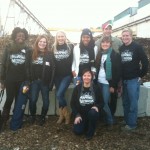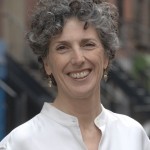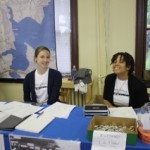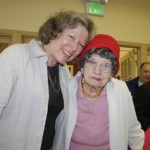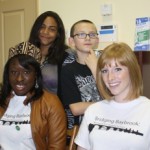Call For Proposals: CHASA Spring 2015: Urban Places, Digital Spaces
The annual conference of the Chesapeake American Studies Association (CHASA) will be held at the University of Maryland, Baltimore County (UMBC) on Saturday, March 28 (plenary panel discussion on Friday evening March 27).
The 2015 meeting theme “Urban Places, Digital Spaces” will investigate issues of place and space as well as the role of media and digital culture in an urban context. Papers may explore the impact of digital technology on cities or other places, examine specific digital projects on places, or analyze the changing nature of space in the digital age.
How does digital culture influence cities? How has the spatial turn in the humanities influenced our understanding of places? How are issues of power and identity grounded in place?
We encourage scholars at all levels to apply, including undergraduate students, graduate students, and professionals working in museums, archives, libraries, non-profits, historic preservation, and community organizations. The CHASA conference is an open and friendly space that is ideal for presenting new work or project ideas.
Proposals may be for an individual paper or a complete panel. Please note that we will reward the best undergraduate and graduate papers with a cash prize.
Please send abstracts of no more than 300 words (500 words for a panel proposal) along with a short biographical statement (maximum 200 words) to Nicole King at [email protected] by December 14, 2014.
Plenary Panel Discussion on Friday – March 27 from 7-8:30pm
How and why does place matter in an urban context?
The plenary panel will discuss how place matters in an urban context. Panelists will begin with a brief discussion of their intellectual history and current projects. Then the panel will discuss the conference’s central questions: How and why does place matter? What is the role of media and digital culture in urban culture? How does digital culture influence cities? How has the spatial turn in the humanities influenced our understanding of place? How are issues of power and identity grounded in place? What is often neglected in our discussions of the digital in the city? How can we cross the digital divide?
PANELISTS
Trevor Muñoz is Associate Director of Maryland Institute for Technology in the Humanities (MITH) as well as Assistant Dean for Digital Humanities Research at the University of Maryland Libraries. Muñoz holds an MA in Digital Humanities from the Department of Digital Humanities at King’s College London and a MS in Library and Information Science from the Graduate School of Library and Information Science at the University of Illinois, Urbana-Champaign. He specializes in issues related to curation of humanities data including data management planning, systems, and best practices. Trevor is co-editor of a forthcoming guide to resources for Data Curation in the Humanities and co-organized the first Humanities Data Curation Summit intended to promote the development of a sustainable plan for preserving digital humanities research. He is involved in the “O Say Can You See”: the Early Washington, D.C. Law and Family Project explores multi-generational black and white family networks in early Washington, D.C., by collecting, digitizing, making accessible, and analyzing over 4,000 court documents: http://mith.umd.edu/research/project/o-say-can-see-early-washington-d-c-law-family-project/
Michelle L. Stefano leads the partnership between UMBC and Maryland Traditions, the folklife program of the Maryland State Arts Council. She divides her time between serving as Visiting Assistant Professor of American Studies at UMBC and the Assistant Director for Maryland Traditions. In 2010, Stefano was awarded her Ph.D. from the International Centre for Cultural and Heritage Studies at Newcastle University (UK). Her research examines how “intangible cultural heritage” can be most effectively safeguarded at the non-local level (international and national) and local levels. She received her MA in International Museum Studies from Gothenburg University, Sweden in 2004, and her BA from Brown University in 2000. Her work is published in various journals, and she is co-editor of Safeguarding Intangible Heritage (Boydell & Brewer, 2012) and the Routledge Companion to Intangible Heritage (forthcoming). Stefano has worked on various new media projects focused on places in Maryland, such as Mill Stories—a cultural documentation project on the communities of the Sparrows Point Steel Mill in Baltimore County: http://millstories.umbc.edu/
D. Watkins is a writer, speaker, and educator who grew up in East Baltimore. Like most residents of his neighborhood, his life was never destined for college campuses. The choices he made in his youth seemed to make sure his journey would end before it even began. But somewhere along the way, D. Watkins saw the error of his ways; he enrolled in college, and vowed to make a difference in his community. You can still find Professor Watkins in those same East Baltimore streets, but now as a teacher and youth advocate. He has decided to embrace his mission by using his writing to give a platform to the unheard occupants of his old neighborhood. Watkins has been published in The Huffington Post, Vice, StopBeingFamous, 1729mag, and Salon. He has also been featured on NPR’s Monday Morning, The Marc Steiner Show, and Huff Post Live. Watkins currently holds a Master’s in Education from John Hopkins University and an MFA in Creative Writing from the University of Baltimore. He is an adjunct professor at Coppin University and runs a creative writing workshop at the Baltimore Free School. Watkins’ debut memoir, Cook Up, will be published by Grand Central Publishing in 2015: http://d-watkins.com/








